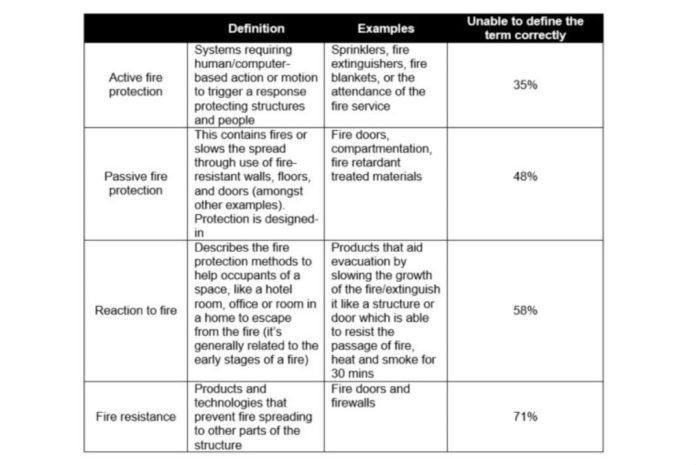Two years after Grenfell, 92% of UK architects are unable to define key building fire protection terms. That’s according to findings from the latest study of architects and specifiers by Zeroignition, the fire-retardant ingredient technology firm.
Architects were asked about their understanding of four common terms relating to buildings and fire. Only 8% were able to correctly define these four basic fire protection terms.
The terms were active fire protection (systems which protect structures and people including sprinkler systems, fire extinguishers, smoke alarms); passive fire protection (whereby the spread of fire is slowed or contained through the use of fire-resistant walls, floors and doors, amongst others); fire resistance (a set of products that prevent fire spreading to other parts of the structure) and reaction to fire (methods designed to help people escape from fire).
While one in three architects (35%) were unable to correctly define the concept of active fire protection, when asked about fire protection options they’d considered in projects, smoke alarms were named by 38% and sprinklers by 33%.
Just over half (52%) of all architects couldn’t give an accurate definition of passive fire protection, where fire protection is ‘built in’. However, 54% did cite fire doors as a consideration, which is part of the passive approach. Passive technologies such as flame retardant treated materials e.g. firewall were considered by over a quarter (29%), plasterboard by 21% and plywood/OSB by 8%.
58% of architects were unable to explain what ‘reaction to fire’ is and almost three quarters (71%) were unable to define fire resistance.
None of the architects interviewed said they’d had comprehensive fire protection training, but while most had some training, 8% say they’ve had none.
Ian King, chief operating officer, Zeroignition, said: “Architects are responsible for designing safe buildings. There’s clearly a lack of understanding as to the fire basics which is worrying to say the least. Architects, their employers and the professional bodies need to invest in ensuring this knowledge is bedded in.”




